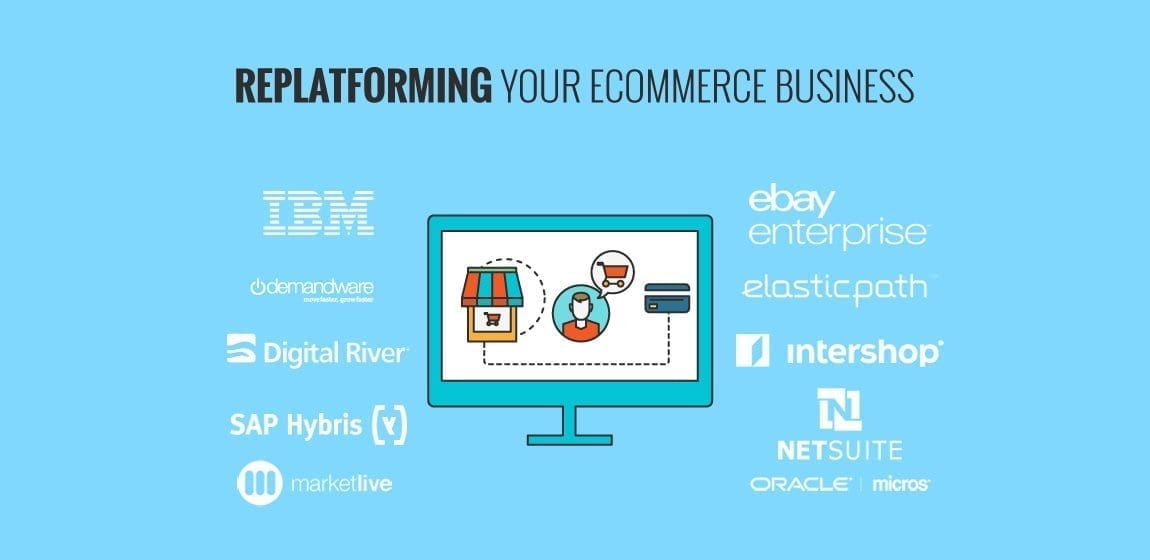Why re-platforming? Hard arguments and 7 tips
Ecommerce is getting bigger and bigger. Are you growing with it? And can your current platform handle the growth and the many innovations? It is a question that affects the future-proofing of your e-business. If you don't take measures to optimally facilitate the customer journey, you will be at a loss. Choosing and switching to a different platform is no easy task, but it does bring great benefits. Why re-platforming is important and how to prepare for it? We will give you some tips and point you to our just published white paper on re-platforming. You can read it here to download.
Success starts with ambition and a clear strategy. It is crucial that your platform (your application and associated support) supports this. A lot has changed since Amazon started the flywheel (1995) and the online consumer is used to countless features. It is not inconceivable that your current platform lags behind. But isn't re-platforming mainly a scary operation with an uncertain outcome? It is definitely not a piece of cake and there are many pitfalls. But with a good, systematic approach, much entrepreneurial suffering can be prevented.
Re-platforming - what it is and why you think about it
But first: what exactly is re-platforming? Re-platforming, also known as 'Ecommerce Platform Migration', represents the process by which you move your brand and the underlying processes to a new platform. That also means: a new host and a new infrastructure. You convert the step, which is quite drastic, to:
- improve the quality of your systems;
- optimize the customer experience;
- integrate more features;
- better give hands and feet to your Omni-Channel strategy;
- do more with data.
The offer of Ecommerce platforms has skyrocketed in recent years. The sky is the limit. Software-as-a-Service (SaaS) solutions in particular are gaining ground. The advantage is that you work in a secure, 'closed' cloud environment, can easily update and scale up, and do not need your own expensive servers. The plus over open source solutions is that continuity and future-proofing are better guaranteed. In our white paper, we have listed pros and cons.
Why re-platforming? Urgent and less urgent arguments
In the paper you will also find a number of urgent and less urgent arguments that answer the question 'why re-platforming?' If the technology of your existing platform fails too often or the turnover of your webshop decreases, you really have to take measures. This also applies if you have problems with security or privacy, or if you cannot get a grip on IT costs. But there are also many positive arguments. The most important thing is: you want to have a platform that fully matches your ambitions as an e-entrepreneur, with a hundred percent focus on marketing, sales and data.
7 tips for thorough preparation
A successful re-platforming process starts with a sharp analysis of your current situation and an inventory of the wishes and requirements that you set for the new technology from your strategy. You know your business, you make the blueprint. In our white paper you will find practical handles and tips. We'll give away a few of them so that the preparation can start.
- Make a strength-weakness analysis of your current platform and link it to a cost analysis.
- Prepare a detailed set of requirements. That will soon be your 'guide' when negotiating with your new supplier / vendor.
- Differentiate between 'must have', 'should have' and 'nice to have', so you can make realistic budget considerations.
- Let existing processes not be an obstacle in your orientation and choice process. A new platform can actually be a reason to optimize processes, so that you can achieve efficiency gains.
- Go for the long term. Core criteria: flexibility, scalability, connectivity, internationalization, service and support.
- Involve everyone in your organization at an early stage in the operation. For example, put together a working group. Support is essential for a successful exercise.
- Draw up a step-by-step plan and make clear agreements about the implementation. Keep in mind the purpose and benefits at every step.
Knowing more? We are happy to go with you in conversation. Don't forget the paper to download.


